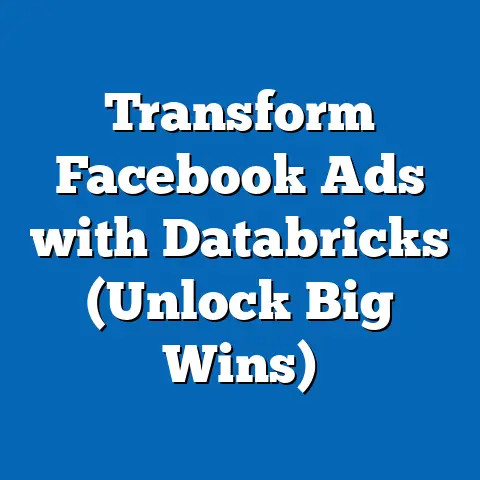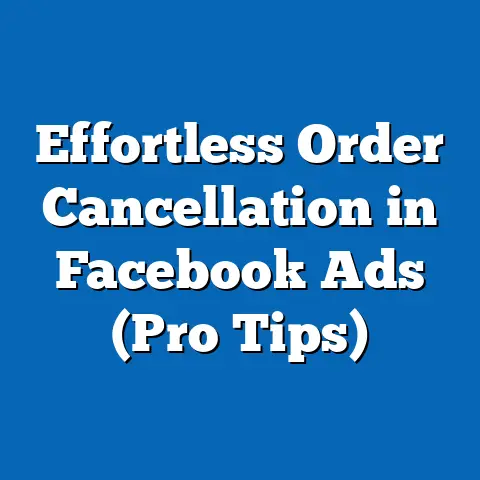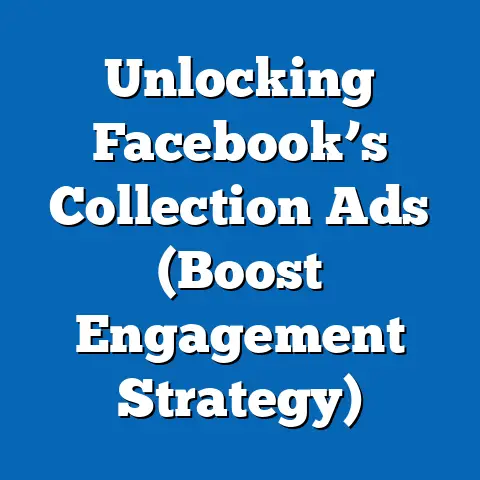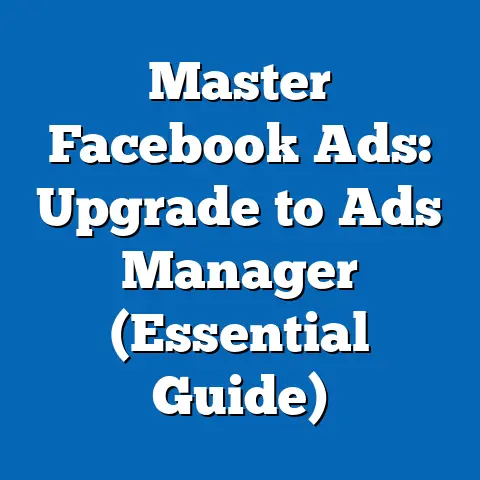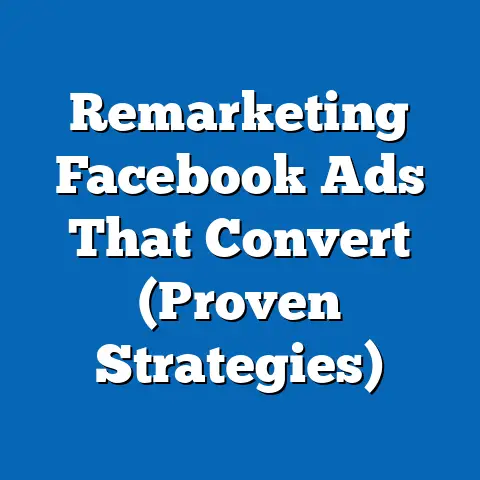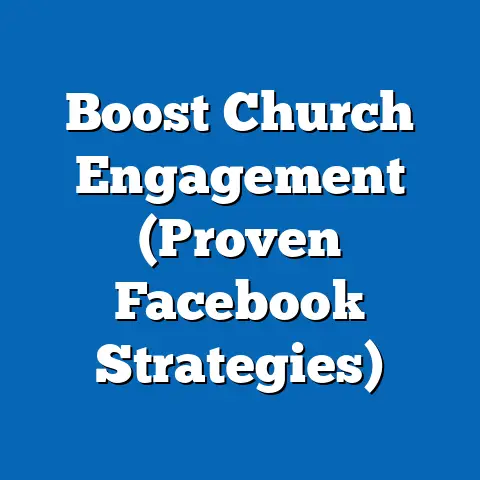Master Facebook 360 Ads (Unlock Immersive Engagement)
The digital advertising landscape is in constant flux. Remember the days when a simple banner ad was enough to grab attention? Those days are long gone. Today, consumers are bombarded with information, making it harder than ever for brands to cut through the noise. That’s why immersive experiences are becoming increasingly vital for capturing and holding audience attention. One of the most exciting tools in this realm is Facebook 360 Ads, and I’m here to tell you how to master them.
Facebook 360 Ads offer a cutting-edge way for brands to engage users more interactively and immersively than ever before. They allow viewers to explore environments and products from all angles, fostering a deeper connection and leaving a lasting impression. This isn’t just about showing a product; it’s about letting the consumer experience it.
In this article, I’m going to take you on a deep dive into the world of Facebook 360 Ads. I’ll explore their functionalities, share real-world examples, and provide a step-by-step guide to help you transform your advertising strategies. Get ready to unlock a new level of engagement!
Section 1: Understanding Facebook 360 Ads
So, what exactly are Facebook 360 Ads? Simply put, they are ad formats that allow users to view a 360-degree video or image within the Facebook platform. This means viewers can pan around the scene, looking up, down, left, and right, as if they were physically present in the environment.
What makes them unique compared to traditional ads? Well, traditional ads are static and often interruptive. 360 Ads, on the other hand, are inherently interactive and engaging. They invite users to explore and discover, creating a more memorable and positive brand experience. It’s the difference between passively seeing an advertisement and actively participating in a virtual experience.
The technology behind 360-degree video and images is fascinating. It relies on specialized cameras that capture footage from all directions simultaneously. This footage is then stitched together to create a seamless panoramic view. When viewers interact with the ad on Facebook, they’re essentially controlling the camera’s perspective, creating a sense of presence and immersion. I remember the first time I experienced a well-executed 360 ad – it felt like I was actually there, exploring a new place. That’s the power of this technology.
Successful Campaigns & Content Types
Let’s talk about some examples of successful campaigns that have leveraged Facebook 360 Ads. Travel brands often use them to showcase destinations, allowing potential tourists to “walk” through a resort or explore a historical site. Real estate companies use them to give virtual tours of properties, saving time for both agents and prospective buyers. Automotive brands use them to showcase the interior of a car, letting users explore every detail. I’ve even seen non-profits use them to create empathy by placing viewers in the shoes of someone facing a challenge.
What types of content work particularly well with 360 Ads?
- Travel Experiences: Showcase destinations, resorts, and attractions.
- Product Showcases: Highlight the features and benefits of a product in an interactive way.
- Event Promotions: Give potential attendees a taste of the event atmosphere.
- Real Estate Tours: Allow prospective buyers to explore properties remotely.
- Training and Education: Provide immersive training experiences for employees or customers.
Key Takeaway: Facebook 360 Ads offer a unique way to engage your audience by creating immersive and interactive experiences. Consider how you can leverage this technology to showcase your products, services, or brand in a way that captivates viewers and leaves a lasting impression.
Section 2: Key Functionalities of Facebook 360 Ads
Now, let’s delve into the key functionalities that make Facebook 360 Ads so effective.
Interactive Elements
One of the most compelling features of 360 Ads is their ability to incorporate interactive elements. These elements, such as hotspots or clickable areas, allow viewers to engage with the ad in a more meaningful way. For example, a furniture retailer could include hotspots on different pieces of furniture in a 360 room view. Clicking on a hotspot could reveal product details, pricing, or even a link to purchase the item. I’ve found that ads with well-placed hotspots significantly increase engagement and drive conversions.
The key to successful interactive elements is relevance and user experience. Make sure the hotspots are intuitive and provide valuable information. Don’t overload the ad with too many elements, as this can be overwhelming. Think about what your audience wants to know and design the interactive experience accordingly.
Mobile Optimization
In today’s mobile-first world, mobile optimization is paramount. The vast majority of Facebook users access the platform on their smartphones and tablets, so your 360 Ads need to look and perform flawlessly on these devices.
Facebook understands this and optimizes 360 Ads for mobile viewing. The platform automatically adjusts the resolution and bitrate of the video or image to ensure a smooth viewing experience, even on slower connections. I always recommend testing your ads on different devices to ensure they look and function as intended. Pay close attention to loading times and image quality.
Targeting Capabilities
Like all Facebook Ads, 360 Ads benefit from Facebook’s robust targeting capabilities. You can target your ads based on demographics, interests, behaviors, and more. This allows you to reach the right audience with the right message, maximizing the impact of your campaign.
For example, if you’re promoting a luxury travel destination, you could target affluent users who have shown an interest in travel and luxury goods. If you’re promoting a new gaming console, you could target young adults who have expressed an interest in gaming and technology. I’ve found that precise targeting is crucial for achieving a high return on investment with 360 Ads.
Analytics and Insights
Measuring the effectiveness of your 360 Ads is essential for optimizing your campaigns and achieving your goals. Facebook provides a range of tracking and analytics tools that allow you to monitor engagement metrics and user behavior.
Some of the key metrics to track include:
- Views: The number of times your ad has been viewed.
- Average View Time: The average amount of time viewers spend watching your ad.
- Engagement Rate: The percentage of viewers who interact with your ad (e.g., clicking on hotspots, panning around the scene).
- Click-Through Rate (CTR): The percentage of viewers who click on a link in your ad.
- Conversions: The number of viewers who take a desired action after seeing your ad (e.g., making a purchase, signing up for a newsletter).
By analyzing these metrics, you can gain valuable insights into how users are interacting with your 360 Ads and identify areas for improvement. I always recommend A/B testing different versions of your ads to see what resonates best with your audience.
Key Takeaway: Facebook 360 Ads offer a range of functionalities that can enhance user engagement and drive results. By leveraging interactive elements, optimizing for mobile, utilizing precise targeting, and tracking key metrics, you can create compelling campaigns that captivate viewers and achieve your marketing goals.
Section 3: Creating Compelling Facebook 360 Ads
Now, let’s get down to the nitty-gritty: creating compelling Facebook 360 Ads. Here’s a step-by-step guide to help you bring your vision to life:
Content Creation
The foundation of any successful 360 Ad is high-quality content. This means creating visuals that are both stunning and engaging. Think about the story you want to tell and how you can use the 360-degree format to enhance that narrative.
For example, if you’re a travel brand, you could create a 360 video that takes viewers on a virtual tour of a beautiful beach. If you’re a product retailer, you could create a 360 image that allows viewers to explore your product from all angles. I always emphasize the importance of storytelling. Your 360 ad should not just be a visual experience, but a narrative that captivates and resonates.
Video Production Techniques
Filming and editing 360-degree videos can be challenging, but with the right equipment and techniques, you can create stunning results.
Equipment Recommendations:
- 360 Camera: Invest in a high-quality 360 camera that captures footage in high resolution. Some popular options include the GoPro Max, Insta360 ONE X2, and Ricoh Theta Z1.
- Tripod: Use a sturdy tripod to keep your camera stable and avoid shaky footage.
- Microphone: Record clear audio to enhance the immersive experience.
- Editing Software: Use specialized editing software to stitch together the footage and add effects. Some popular options include Adobe Premiere Pro, Final Cut Pro, and Kolor Autopano Video.
Tips for Filming and Editing:
- Plan your shots: Before you start filming, plan out each shot and think about how you can use the 360-degree format to create a sense of immersion.
- Keep the camera stable: Use a tripod or stabilizer to avoid shaky footage.
- Record clear audio: Use a microphone to capture clear audio.
- Stitch the footage: Use editing software to stitch together the footage from the different lenses of your 360 camera.
- Add effects: Add effects to enhance the visual appeal of your video.
- Optimize for Facebook: Optimize your video for Facebook by using the correct resolution and bitrate.
Ad Setup
Once you have your 360 video or image, you’re ready to set up your ad in Facebook Ads Manager.
Step-by-Step Guide:
Section 4: Real-World Applications and Case Studies
Let’s take a look at some real-world examples of brands that have successfully implemented Facebook 360 Ads in their marketing strategies:
- Thomas Cook: The travel company created a 360 video that allowed viewers to experience a virtual tour of a luxury resort in Egypt. The campaign resulted in a significant increase in bookings and brand awareness.
- Volvo: The car manufacturer created a 360 video that allowed viewers to explore the interior of their new XC90 SUV. The campaign generated a high level of engagement and drove traffic to their website.
- Lowe’s: The home improvement retailer created a 360 video that provided viewers with a virtual tour of a newly renovated kitchen. The campaign inspired viewers to start their own renovation projects and drove sales of kitchen products.
These case studies demonstrate the power of Facebook 360 Ads to engage viewers, increase brand awareness, and drive conversions.
Lessons Learned:
- Focus on storytelling: Create a narrative that captivates viewers and leaves a lasting impression.
- Optimize for mobile: Ensure your ads look and perform flawlessly on smartphones and tablets.
- Use interactive elements: Incorporate hotspots and clickable areas to enhance user engagement.
- Track your results: Monitor key metrics to measure the effectiveness of your campaigns and identify areas for improvement.
Key Takeaway: Real-world examples and case studies demonstrate the potential of Facebook 360 Ads to achieve a variety of marketing goals. By learning from these successes and avoiding common pitfalls, you can create compelling campaigns that deliver results.
Conclusion
In conclusion, Facebook 360 Ads offer a powerful way to engage your audience and stand out in a crowded digital landscape. By creating immersive experiences that captivate viewers and encourage interaction, you can achieve a variety of marketing goals, from increasing brand awareness to driving conversions.
I encourage you to consider integrating 360 Ads into your marketing strategy and to experiment with different content formats, interactive elements, and targeting options. The possibilities are endless!
As we look to the future of advertising, it’s clear that immersive technologies like Facebook 360 Ads will play an increasingly important role in shaping consumer experiences. By embracing these technologies and mastering their functionalities, you can position your brand at the forefront of innovation and create lasting connections with your audience. The future is immersive, and Facebook 360 Ads are your gateway to unlocking its potential.

